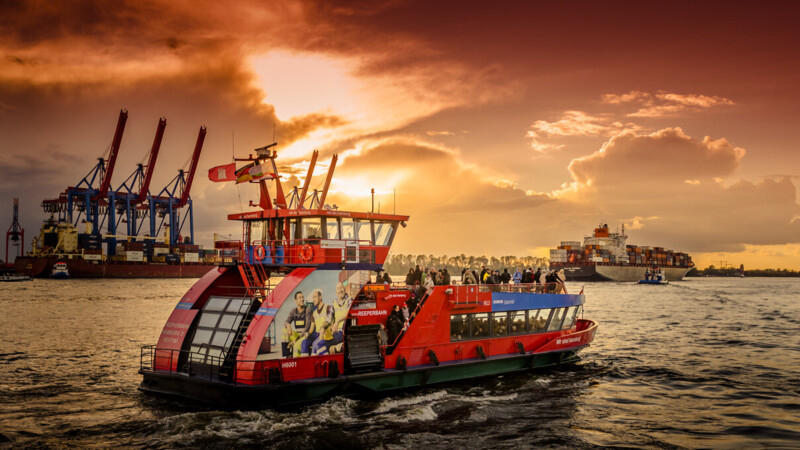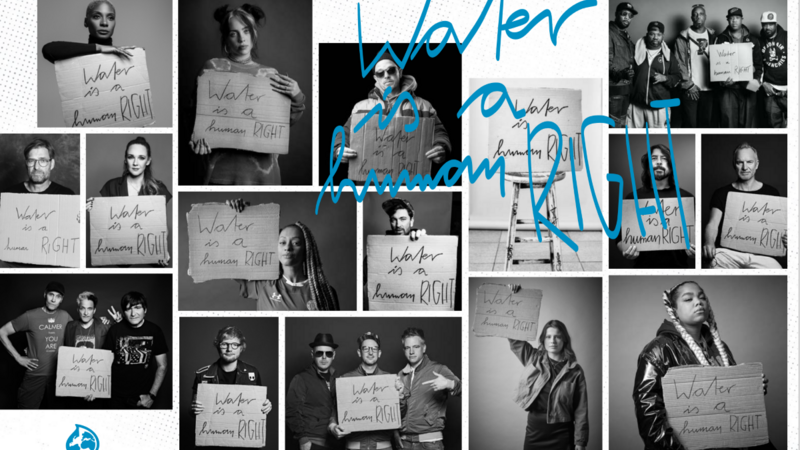Ewers, founder of Euroterra architects, is relying on water to merge the two districts. "Hamburg's canals were once part of the port and goods were ferried to and from the storehouses and warehouses on the waterways. They could now help revive the historic old town centre and become an economic factor again." Ewer's plan foresees the creation of an attractive link to the Speicherstadt World Heritage Site along Nikolaifleet which is only a stone's throw from Überseequartier. At the moment, the six-lane Willy-Brandt-Street is proving a real barrier and hinders the city centre, Speicherstadt and HafenCity from growing together. But that would no longer be an obstacle on the waterway. "We would simply walk under it," says Ewers. The architect explains his plan during a walk with a Hamburg News reporter.
The architect, Marc Ewers, has a clear view of the Trostbrücke over the Nikolaifleet from his office window. The original seat of the Port of Hamburg, the Nikolaifleet, used to be Lake Alster’s main estuary into the Elbe River and hub of the commercial and Hanseatic city of Hamburg. Nowadays, the Mönckebergstreet, around 600 metres north in downtown Hamburg, is one of its main shopping streets. Two kilometres to the south, one of north Germany’s biggest shopping centres, the new Westfield Hamburg-Überseequartier, is being built in HafenCity. However, water damage has forced the owners to postpone the opening of the new centre with 80,500 m² of retail space until August. Given this commercial rival, established shopping streets in downtown Hamburg are now in urgent need of attractive links to the new area. Last November, a round table discussion on the city centre focused on a cathedral axis as a potential link between downtown Hamburg and HafenCity.
Willy-Brandt-Strasse underpass

Mooring pontoons and opening restaurants
Our walk takes us from the Trostbrücke, one of Hamburg's oldest bridges, with the statues of Saint Ansgar, who stood for the episcopal old town, and Count Adolf III von Schauenburg, who represented the prosperous new town with the port as its commercial centre. Ewer notes. "Hamburg's historic old town is an asset that we should exploit fully. It is criss-crossed by more or less abandoned waterways. We could start changing that immediately," he says, pointing to the steps on the banks leading down to the water. "A pontoon could be moored on one side. You could set up restaurants and people could enjoy a glass of wine in the evening sun. All sorts of events like readings or concerts could be held, and the pontoons could be accessed by pedal boats." Electric barges should also be considered to ferry people to the new German Port Museum in Kleiner Grasbrook. In the past, such barges were used to bring fresh vegetables from the Vierlanden region to the city centre. "Down here we can feel the exciting play of the tides, the lively flow of the Alster, inebriated by the Elbe and the North Sea."

"Path along the fleet"
The path along the canal could start on the opposite bank. "That would require a jetty about three to four metres wide. Like the pontoon, the jetty would rise and fall with the tide as needed. The locks are already in place," he adds, "so the path under the bridges would be permanently secured, which would not be the case, if the water level bursts the canal’s banks." It would also prevent the canals from running completely dry and stop the stench. "A slightly musty smell can develop in the summer when the sun dries the silt," says Ewers, 53, albeit that is not really a problem. "People who stroll along the mudflats on the North Sea coast don't mind the smell." This fits in with his sea theme of tides, the smell of the water and a 51-bell carillon echoing from the nearby St. Nikolai Viewing Tower as well as the vistas. "You can see the half-timbered facades of the old office buildings from the water. The buildings facing the street are mostly plastered. There's plenty to discover in the mud.”

Reviving the Nikolaifleeet viewing point
The path under Willy-Brandt-Street leads to the Katharinen district. From there you can take the direct (land) route to Übersee, past Saint Catherine’s Church on Jungfern Bridge. The route along Übersee-Boulevard to the new district is about a 12-minute walk, according to Google Maps. You could also follow the Nikolaifleet to the “Theaterschiff”, Europe's only seaworthy stage, which could become part of the pier link. From the viewing point under the wooden bridge, historic houses on Deichstreet and the Elbphilharmonie Concert Hall are visible in the background. The litter, weeds and the tree sprouting from the wall could becoming a thing of the past. "Imagine a well-maintained place that has been revived with restaurants. There is a plenty of untapped potential here," says Ewers.

Estimated costs
The last section of the waterway would lead to the Deichstrasse. "The jetty could be built relatively easily there, thanks to the existing bollards for ships. The section between the 'Theaterschiff' and Deichstreet would cost an estimated mid-six-figure sum. A feasiblity study would have to be done to determine the exact amount.” But the entrepreneur is convinced that the investment is worthwhile. "Activating the waterways would help the economic revival of the old town and facilitate the opening of more restaurants and small shops." QR codes on panels with texts and photographs illustrating the history of the old town would round off the concept. "Historical images could be projected onto the walls of bridges or facades to immerse visitors in the history of the city. That could be used to re-enact the old town".
ys/pb
Sources and further information
Euroterra
Marc Ewers is a qualified civil engineer and freelance architect. Since founding Euroterra in 1999, his 20-strong team has focused on healthcare and industrial buildings such as the hospice at the Israelite Hospital, the operating theatre extension for the Altona Hospital, the new psychiatric ward at the Alsterdorf Protestant Hospital and paint shops for the Airbus Luftwerft in Finkenwerder.
More
Similar articles

Grasbrook, Hamburg's 106th suburb, emerging opposite HafenCity

Hamburg more popular than ever - city a real tourist magnet

Hadi Teherani planning spectacular new Lakeside Resort Kellersee
